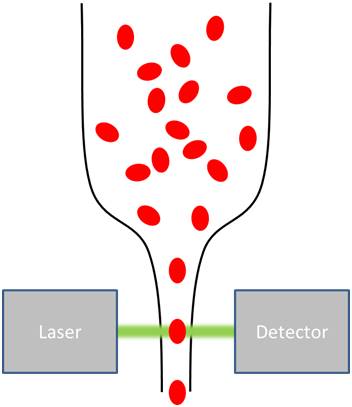Flow cytometer
A flow cytometer is an instrument that analyzes cells using laser light. The figure below shows the basic components of a flow cytometer.

The red dots on the figure illustrates cells that are pushed through a small nozzle such that only one cell at a time passes through the laser beam at a time.
The detector will typically detect both forward scattered, side scattered and fluorescent light. The Forward scattered light can be used to determine the size of the cell while side scattered light can be used to determine the granularity of the cells.
If the proteins in the cells are tagged with fluorophores a fluorescent detector can be used to detect the population of the different proteins. This detector needs to be relatively fast since it must be able to resolve the time-dependent signal arising when cells pass through the laser beam.
Since it is common to use multiple fluorophores to tag different proteins, a diode array spectrophotometer like the PEBBLE VIS can be a good option. A diode array spectrophotometer will detect the full spectrum and therefore provide a lot of information in one scan.
Want to know more?
For further information see below.